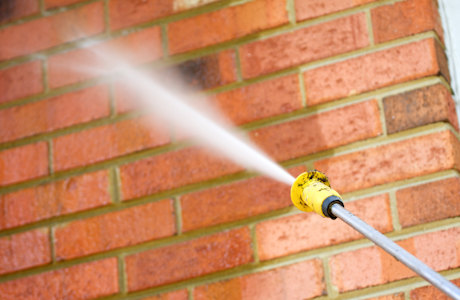A Touch Of Finesse - Painting The Exterior Of Your Home
Professionally painted exterior paint can not only extend the life of the paint but also the house. Be a part of the process rather than leaving everything to the crew.
The painting ofexterior walls is very different from the interiors. Professionally paintedexterior paint can not only extend the life of the paint but also thehouse. Be a part of the process rather than leaving everything to the paintcrew.
Here are some tips tohelp you stay informed and involved!
Prep
This is the mostimportant part of a paint job. Make sure that the paint crew is following thislist of procedures before even beginning actual work.
Washing

Pressure washing for clean walls before you begin painting
It is important tostart with cleaning the surface to remove dust, debris and any trace of mildew.The power washing method is used to remove all the loose dirt along withchalking paint.
Drop Cloths
Place drop cloths orlarge plastic sheets in the area being painted to protect the floor and preventdamage to paving stones, exterior railings, light fixtures etc. When the paintjob is complete, simply remove for a clean finish.
Dropcloths prevent paint stains and dripson exterior walkways
Caulking and Putty
Caulking is used as asealant in joints where the most expansion and contraction happens, like thewindows and doors. Caulking is used to prevent moisture from entering cracks inwood. Always use paintable caulking made from latex. Putty on the other hand isused on old, worn surfaces to seal against moisture and air.
Caulking around a window
Putty is applied tofill and repair surface imperfections
Scraping and Sanding
Scraping removes theold paint coat to create a firm and even base for the top coat, followed bysanding, however, to make the scraped area smoother. Sanding and scraping makethe finished job neater.
Scraping a wall
Sandingcreates a flat surface
Choose your instruments
Paint with the brush
When using the brush, the paint crew should dip first third into the can and tap off excess paint without dragging the bristles on the lip of the can. Long and smooth strokes should be used, for an even surface oil based paint can be used several times. Another alternative is latex paints that need less time to dry.
 Painting with a Brush
Painting with a Brush

Paint with a roller
Rollers cannot be used for corners and trims but are a quicker way to paint expanses of flat surfaces. To correctly use a roller it should be dipped in a paint tray and rolled back and forth to remove the excess paint. Roll on the wall in long, even strokes in all directions to cover the surface quickly but the final coat should be in one direction for a neat finish.
Painting with a roller
Beginning The Process
Priming
Once initial prep workis done, it is time to clear the area and begin with a coat of purpose madeprimer for exterior paints. Primer is used to seal porous surfaces and hide anyimperfections like stains. Primer is essentially a base coat that provides aflat finish and helps paint to adhere to the surface ensuring that the paintjob lasts.
 A coat of exteriorprimer on a home
A coat of exteriorprimer on a home

Finishing Touch
This is where you as ahome owner will play the larger role! Tell the crew the color and finish foryour home's exterior. Also tell them to prime the outer walls with a lightershade of the final color. This will make your top coat more blended. Thetop coat will also protect your house from the UV rays that weathers your home.
Beautifully painted exterior of a house
Paint Trims
Paint trims at the very end, beginning with the window sash and paneling around doorways and then move onto door trims.

Painting the trims
Clean that mess
Once the job iscomplete, all you need to do is discard the drop cloths. The paintcrew should clean up and drips and splashes with chemical paint removerespecially since reaching the second floor skylight glass is going to beimpossible for you!
With these steps yourhome will have a beautifully finished exterior that will last you through thesunshine and the rain, and still look like new for years to come!






